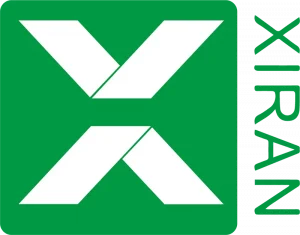
Self-tanning is a mature segment with slow innovation. Although it is a smaller segment than other skincare areas, consumers who use self-tanning products are generally loyal to the category.
Skin health and inclusivity drive innovation in the self-tanning category, while demand for easy-to-use product formats allows brands to ride the "passive beauty" trend.
Next, let’s discuss the current status, innovation direction and future strategic opportunities of the global self-tanning market.

Consumer engagement in the self-tanning category varies significantly by country. Overall, self-tanning products are used most in Western European countries, North America, and Australia, as shown by new product launches; they are used very little in Africa and Asia. South America lags behind key markets but still has appeal.
In the UK, one of the largest self-tanning markets, sales of self-tanning products increased by 8.8% in 2022-2023. Meanwhile, self-tanning product usage in the US increased slightly in 2023-2024. This shows that consumer interest continues to rise even in more mature markets for self-tanning products.
In the past few years, innovation inself-tanning products has focused on new product forms/delivery systems and faster drying. Although brands have begun to expand their product portfolios to cater to consumers with different skin tones and skin types, there is still room for development in this category - such as focusing on consumers with diversified needs, exploring DHA alternative ingredients, taking advantage of the "passive beauty" trend, and promoting the concept of skin health.

In the past few years, industry innovation has focused on new product forms and faster-drying technology. Brands are increasingly focusing on optimizing product delivery systems to give consumers a more convenient and faster experience when using self-tanning products. Self-tanning product innovation not only focuses on quick drying and convenient use but also covers a broader range of skin tones and types. For example, some brands have begun to launch self-tanning products suitable for different skin tones (including dark ones), significantly improving the market's inclusiveness and applicability.
Despite this, there is still much room for development in the self-tanning market, especially in personalized and diversified needs. Consumers increasingly demand color matching, and precise customization based on skin color and natural presentation of self-tanning effects will remain at the core of future self-tanning product innovation.

It is a common misconception that dark-skinned consumers do not use self-tanning products. Today, dark-skinned consumers are increasingly aware of the benefits of sunless self-tanning products, such as even skin tone and radiance, and brands can seize the opportunity to launch tailored solutions.
With the popularity of personalized color attribute analysis, brands can use the color wheel to provide complementary tones and shades based on each person's different color seasonality.
As consumers' demand for personalized and precise skin care increases, customized self-tanning products are gradually emerging. Brands can use AI technology to analyze skin color and provide personalized color suggestions so consumers can get the self-tanning product that best matches their skin tone and skin type.
For example, through color wheel analysis and seasonal color trends, brands can recommend color numbers and self-tanning effects that match individual skin tones to consumers, thereby increasing consumers' trust and satisfaction with self-tanning products. Consumers can see the actual presentation of self-tanning effects and feel the perfect fit between the product and their skin tone and texture.

Although women are still the primary consumers of self-tanning products, the demand from men, middle-aged, and elderly consumers is also gradually increasing. Many male consumers also hope to improve their skin tone through sunless self-tanning products and obtain a healthy skin tone and natural radiance. At the same time, the demand for tanning products among middle-aged and elderly groups is also increasing, especially those consumers who hope to even out their skin tone and improve dull skin through tanning.
To meet this demand, brands can launch more exclusive product lines for men and middle-aged and older adults, such as light tanning creams suitable for different skin types, oil-free formulas, etc., and even use the visual language of packaging and advertising to reflect a more inclusive brand image.
Passive beauty has been a rising skincare trend in recent years. It refers to beauty products continuously improving skin quality and appearance without additional time or effort. The self-tanning market actively integrates this trend and develops more convenient, efficient, and infrequently used products. For example, the increasingly popular quick-drying self-tanning foam and wash-free spray can provide consumers with significant tanning effects in a short period without needing long-term care.

As consumers' attention to skin health and environmental sustainability continues to rise, innovation in tanning products will inevitably involve more of these areas. For example, using natural ingredients, animal-free formulas, and environmentally friendly packaging materials will become the trend of self-tanning brands. Brands need to meet consumers' skin beauty needs and consider how to win market share through sustainable production methods.
In addition, skin health will continue to be an essential development direction for self-tanning products. Brands can combine skincare and tanning effects to launch all-in-one products that provide self-tanning effects and have skincare functions such as nourishment, repair, and anti-aging, attracting consumers who pay more attention to health care.
As a skin care product manufacturer, we are well aware that self-tanning products are not only a symbol of fashion, but also a reflection of skin health and personalized needs. Although the tanning market is relatively mature and the pace of innovation is slow, consumers are very loyal to self-tanning products. We are committed to providing more efficient, inclusive and environmentally friendly tanning solutions to consumers around the world through technological innovation and personalized services.


